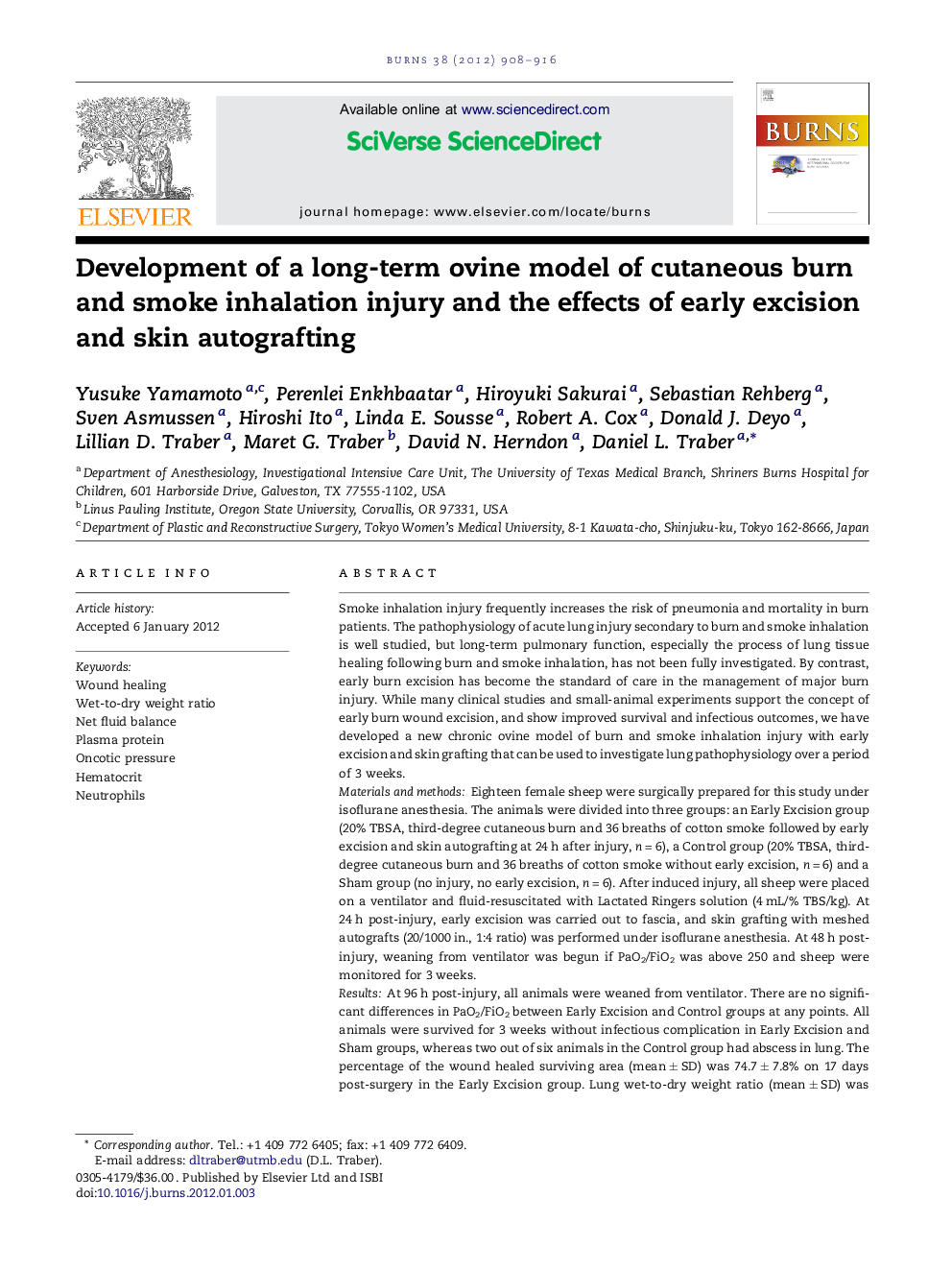| کد مقاله | کد نشریه | سال انتشار | مقاله انگلیسی | نسخه تمام متن |
|---|---|---|---|---|
| 3104933 | 1191668 | 2012 | 9 صفحه PDF | دانلود رایگان |

Smoke inhalation injury frequently increases the risk of pneumonia and mortality in burn patients. The pathophysiology of acute lung injury secondary to burn and smoke inhalation is well studied, but long-term pulmonary function, especially the process of lung tissue healing following burn and smoke inhalation, has not been fully investigated. By contrast, early burn excision has become the standard of care in the management of major burn injury. While many clinical studies and small-animal experiments support the concept of early burn wound excision, and show improved survival and infectious outcomes, we have developed a new chronic ovine model of burn and smoke inhalation injury with early excision and skin grafting that can be used to investigate lung pathophysiology over a period of 3 weeks.Materials and methodsEighteen female sheep were surgically prepared for this study under isoflurane anesthesia. The animals were divided into three groups: an Early Excision group (20% TBSA, third-degree cutaneous burn and 36 breaths of cotton smoke followed by early excision and skin autografting at 24 h after injury, n = 6), a Control group (20% TBSA, third-degree cutaneous burn and 36 breaths of cotton smoke without early excision, n = 6) and a Sham group (no injury, no early excision, n = 6). After induced injury, all sheep were placed on a ventilator and fluid-resuscitated with Lactated Ringers solution (4 mL/% TBS/kg). At 24 h post-injury, early excision was carried out to fascia, and skin grafting with meshed autografts (20/1000 in., 1:4 ratio) was performed under isoflurane anesthesia. At 48 h post-injury, weaning from ventilator was begun if PaO2/FiO2 was above 250 and sheep were monitored for 3 weeks.ResultsAt 96 h post-injury, all animals were weaned from ventilator. There are no significant differences in PaO2/FiO2 between Early Excision and Control groups at any points. All animals were survived for 3 weeks without infectious complication in Early Excision and Sham groups, whereas two out of six animals in the Control group had abscess in lung. The percentage of the wound healed surviving area (mean ± SD) was 74.7 ± 7.8% on 17 days post-surgery in the Early Excision group. Lung wet-to-dry weight ratio (mean ± SD) was significantly increased in the Early Excision group vs. Sham group (p < 0.05). The calculated net fluid balance significantly increased in the early excision compared to those seen in the Sham and Control groups. Plasma protein, oncotic pressure, hematocrit of % baseline, hemoglobin of % baseline, white blood cell and neutrophil were significantly decreased in the Early Excision group vs. Control group.ConclusionsThe early excision model closely resembles practice in a clinical setting and allows long-term observations of pulmonary function following burn and smoke inhalation injury. Further studies are warranted to assess lung tissue scarring and measuring collagen deposition, lung compliance and diffusion capacity.
Journal: Burns - Volume 38, Issue 6, September 2012, Pages 908–916